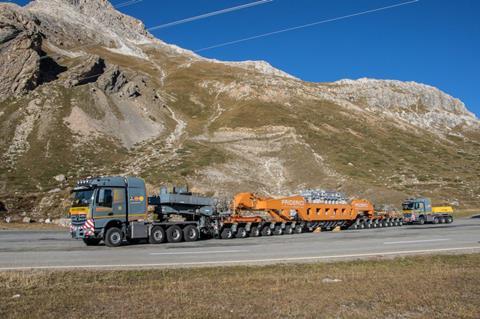The European association of abnormal road transport and mobile cranes (ESTA) has criticised the European Union’s (EU) latest emission reduction targets, warning that they are impractical and unrealistic.

The EU Council and the European Parliament’s negotiators announced an agreement to on CO2 emission standards for heavy-duty vehicles (HDVs) with the aim of further reducing emissions in the road transport sector and introducing targets for 2030, 2035 and 2040. The proposal also aims to encourage an increasing share of zero-emission vehicles (ZEVs) in the EU-wide HDV fleet while “ensuring that innovation in the sector and its competitiveness are preserved and enhanced”.
The deal is provisional, pending formal adoption by both institutions and will make almost all new HDVs with certified CO2 emissions – including smaller trucks and trailers – subject to emissions reduction targets. According to ESTA, if adopted unchanged, the agreement maintains the emissions reduction targets for manufacturers of trucks and coaches originally set by the European Commission – 45 percent by 2030, escalating to 65 percent as of 2035, before jumping to 90 percent starting in 2040.
These targets will apply to heavy trucks over 7.5 tonnes and coaches. The negotiators agreed to set the targets for trailers at 7.5 percent and for semi-trailers at 10 percent.
The effectiveness and impact of the amended regulation on the targets will be reviewed by the commission in 2027.
ESTA, however, has strongly criticised the European officials for agreeing the reduced CO2 emissions standards “without putting in place a plan to develop the necessary infrastructure for electric vehicle charging and adoption of alternative fuels”.
ESTA director Ton Klijn said: “We are unhappy that the council and the parliament have agreed to maintain these unrealistic emissions reduction targets. Despite the industry and numerous members of the European Parliament calling for a feasible decarbonisation path, the co-negotiators have given the green light to idealistic targets detached from available energy supply and on-the-ground business reality.”
He said that there are some positive elements in the announcement, such as the decision to agree an earlier and more wide-ranging review in 2027 but he added: “We see no signs, in the short and medium term, that the necessary infrastructure for such extreme zero-emission HDV targets will be ready for large scale deployment in urban areas and on major EU road networks.
“The thinking behind the policy is commendable, but without such a plan to deal with the infrastructure practicalities, it will fail.”
The provisional agreement will now be submitted to the member states’ representatives within the council and to the parliament’s environment committee for endorsement. If approved, the text will then need to be formally adopted by both institutions, before being published in the EU’s Official Journal and coming into force.
















